Did you know that rhubarb is not actually a fruit, but a vegetable? This tart and tangy plant, often mistaken for a fruit, is in fact a seasonal vegetable that is widely enjoyed in various cuisines. With its vibrant red stalks and unique flavor, rhubarb is a favorite ingredient for pies, jams, sauces, and more. But when is rhubarb in season, and what is the best time to harvest it? In this article, I will guide you through the rhubarb season, provide tips for growing and harvesting rhubarb, share delicious recipes to try, and explore the health benefits of this versatile plant.
Whether you are an experienced gardener or a culinary enthusiast, this comprehensive guide will equip you with the knowledge and skills to make the most of rhubarb season. From planting and maintenance tips to preserving and cooking techniques, you’ll discover everything you need to know to enjoy the bountiful harvest of this incredible vegetable.
Key Takeaways:
- Rhubarb is a vegetable, not a fruit, known for its tart and tangy flavor.
- The best time for rhubarb harvest is when the stalks are 10 to 15 inches long and at least 3/4-inch in diameter.
- Rhubarb can be preserved through freezing or canning for year-round enjoyment.
- There are countless delicious recipes that can be made with rhubarb, including pies, jams, sauces, and more.
- Rhubarb is a nutritious plant, rich in vitamin C, dietary fiber, and minerals.
Growing Rhubarb: Tips and Techniques
Are you interested in growing rhubarb in your garden? Well, you’re in luck! Rhubarb is a hardy and easy-to-grow perennial plant that can bring a unique tangy flavor to your dishes. Whether you’re an experienced gardener or a beginner, here are some tips and techniques to help you grow rhubarb successfully.
1. Location and Soil:
Rhubarb prefers full sun or partial shade, so choose a location in your garden that receives at least 6 hours of sunlight each day. The soil should be well-draining and fertile. Prepare the soil by adding compost or well-rotted manure to improve its nutrient content.
2. Planting:
It is best to plant 1-year-old rhubarb crowns in the spring. Make sure to space them at least 3 feet apart to allow room for their large leaves to spread out. Dig a hole large enough to accommodate the crown and its roots. Place the crown in the hole with the buds facing upwards, and cover it with soil. Water the plant thoroughly after planting.
3. Watering:
While rhubarb is a relatively low-maintenance plant, it requires consistent watering, especially in the first two years of growth. Water the plants regularly, providing enough moisture to keep the soil moist but not waterlogged. Avoid overwatering, as it can lead to root rot.
4. Fertilizing:
To promote healthy growth, fertilize your rhubarb plants annually in early spring. Apply a layer of compost around the base of the plant, avoiding direct contact with the crown. This will provide essential nutrients and help the soil retain moisture.
5. Mulching:
Mulching around the base of the rhubarb plant can help retain moisture and suppress weed growth. Use organic mulch such as straw or shredded leaves to create a layer about 2 to 3 inches thick. This will also help keep the soil temperature more consistent.
6. Division:
Every 4 to 5 years, rhubarb plants can be divided to maintain their health and vigor. Dividing the plants involves digging up the crowns and separating them into smaller sections, each containing at least one bud. Replant the divisions in well-prepared soil, following the spacing guidelines mentioned earlier.
Quote:
“Rhubarb is a resilient plant that can provide a bountiful harvest year after year. With a little attention to its basic needs, you can enjoy the tangy delight of homegrown rhubarb in your favorite recipes.” – Rhubarb Enthusiast
By following these tips and techniques, you can create an ideal environment for your rhubarb plants to thrive. Soon, you’ll be harvesting stalks that are perfect for pies, sauces, and other mouthwatering dishes. Happy rhubarb gardening!
Harvesting Rhubarb: When and How to Harvest
Once your rhubarb plant has been established for a year, it’s time to enjoy the fruits of your labor by harvesting the delicious stalks. Harvesting rhubarb at the right time ensures optimum flavor and continued production. Here’s a guide on when and how to harvest your rhubarb.
When to Harvest Rhubarb
It’s best to wait until the rhubarb stalks reach a mature size before harvesting. They should be around 10 to 15 inches long and at least 3/4-inch in diameter. Harvesting smaller stalks might lead to diminished flavor, while larger stalks can become tough and fibrous.
Remember, it’s important to give your rhubarb plant time to establish in its first year, so it’s recommended to harvest sparingly during this period. However, in subsequent years, you can enjoy a two-month harvest season once your plant is fully established.
How to Harvest Rhubarb
When it’s time to harvest your rhubarb, gently twist and pull the stalks from the base of the plant. If necessary, you can use a sharp knife to cut the stalks close to the plant base. Be sure to remove any leaves attached to the stalks, as they are toxic and should not be consumed.
It’s important to leave at least two stalks per plant during harvesting to ensure the plant’s continued growth and production. By leaving a few stalks, you allow the plant to gather energy and nutrients for future growth.
To help visualize the harvesting process and the parts of a rhubarb plant, refer to the diagram below:
| Part | Description |
|---|---|
| Stalks | Edible part of the rhubarb plant. They are crisp and tart, perfect for various recipes. |
| Leaves | Large, green leaves that are toxic and should not be consumed. They need to be removed and composted. |
| Base | The lower part of the rhubarb plant from which the stalks emerge. It’s important not to damage the base when harvesting. |
Once you’ve harvested your rhubarb, you can explore a wide range of delicious recipes. From pies and crumbles to jams and sauces, rhubarb adds a unique flavor to both sweet and savory dishes. Stay tuned for the next section where I’ll share some tantalizing rhubarb recipes to try!
Preserving Rhubarb: Freezing and Storing
Preserving rhubarb is a great way to enjoy its delicious flavor and tangy taste even when it’s out of season. By freezing or storing rhubarb properly, you can extend its shelf life and have it readily available for various recipes. Here are some methods for preserving rhubarb:
Freezing Rhubarb
If you want to freeze rhubarb for long-term storage, follow these simple steps:
- Clean the rhubarb stalks thoroughly under running water.
- Cut the rhubarb into desired pieces. Typically, 1-inch to 2-inch lengths work well.
- Prepare a baking sheet and place the rhubarb pieces on it, making sure they don’t touch each other.
- Flash freeze the rhubarb in the freezer for about 2 hours or until the pieces are firm.
- Transfer the frozen rhubarb into freezer bags, removing as much air as possible.
- Label the bags with the date and place them back in the freezer.
By flash freezing the rhubarb before packing it into freezer bags, you prevent the pieces from sticking together, making it easier to grab the desired amount later on.
Storing Rhubarb in the Refrigerator
If you want to store rhubarb for a shorter period in the refrigerator, follow these steps:
- Clean the rhubarb stalks thoroughly under running water.
- Trim off any leaves and discard them. Remember that rhubarb leaves are toxic and should not be consumed.
- Wrap the individual stalks tightly in plastic wrap or aluminum foil.
- Place the wrapped rhubarb in the refrigerator’s vegetable drawer.
Storing rhubarb in the refrigerator can keep it fresh for up to a couple of weeks, allowing you to use it in recipes whenever you like.
| Preservation Method | Shelf Life | Best Used For |
|---|---|---|
| Freezing | Up to 1 year | All recipes |
| Refrigeration | Up to 2 weeks | Fresh salads and quick recipes |
Freezing and storing rhubarb allows you to enjoy its unique flavor year-round. Whether you plan to make pies, jams, or other delicious rhubarb recipes, having preserved rhubarb on hand makes the process more convenient. So go ahead and savor the tangy goodness of rhubarb no matter the season!
Cooking with Rhubarb: Delicious Recipes to Try
Rhubarb is a versatile ingredient that adds a unique tangy flavor to both sweet and savory dishes. From classic desserts to tasty condiments, there are plenty of delicious recipes to explore using this vibrant plant. Whether you’re a seasoned cook or a beginner in the kitchen, here are some mouthwatering rhubarb recipes to try:
Rhubarb Pie
Indulge in the timeless combination of tart rhubarb and sweet pastry with a homemade rhubarb pie. This classic dessert is perfect for showcasing the natural flavors of this vibrant plant. Serve it warm with a scoop of vanilla ice cream for a delightful treat.
Rhubarb Chutney
Add a zesty twist to your meals with a homemade rhubarb chutney. The tangy rhubarb pairs perfectly with spices, onions, and vinegar, creating a versatile condiment that complements a variety of dishes. Spread it on crackers, serve it alongside roasted meats, or use it as a sandwich spread for a burst of flavor.
Rhubarb Jam
Preserve the freshness of rhubarb with a batch of homemade rhubarb jam. The vibrant pink color and tangy-sweet taste make it a delightful addition to your breakfast spread or a perfect filling for thumbprint cookies. Enjoy the bright flavors of rhubarb all year round with this simple and rewarding recipe.
Rhubarb Sauce
Amp up the flavor of your desserts or breakfast dishes with a luscious rhubarb sauce. Simply simmer rhubarb with sugar and a splash of water until it breaks down into a silky smooth sauce. Drizzle it over pancakes, waffles, or yogurt for a burst of vibrant flavor.
Rhubarb Muffins
Start your day with tender and moist rhubarb muffins. The tartness of rhubarb adds a delightful contrast to the sweetness of the muffin batter. Enjoy them for breakfast or as a midday snack for a burst of flavor that will brighten your day.
Rhubarb Sorbet
Cool down on a hot day with a refreshing rhubarb sorbet. Blend cooked rhubarb with sugar and lemon juice, then freeze the mixture until it reaches a smooth and velvety texture. Scoop the vibrant pink sorbet into bowls or cones for a delightful and tangy frozen treat.
Rhubarb Salad
Add a tangy twist to your salads with fresh rhubarb. Slice it thinly and toss it with greens, strawberries, goat cheese, and a citrusy vinaigrette for a refreshing and vibrant salad. The unique combination of flavors will delight your taste buds and make your salad shine.
These are just a few examples of the many delightful ways to incorporate rhubarb into your cooking. Experiment with these recipes and let your creativity flow in the kitchen. Enjoy the unique flavors and versatility that rhubarb brings to your culinary adventures.
Remember to showcase the vibrant beauty of rhubarb in your dishes and capture the essence of this tangy ingredient with every bite.
Overview of Rhubarb Recipes
| Recipe | Description |
|---|---|
| Rhubarb Pie | A classic dessert with tangy rhubarb filling and flaky pastry crust. |
| Rhubarb Chutney | A zesty condiment made with rhubarb, spices, onions, and vinegar. |
| Rhubarb Jam | A sweet and tangy preserve made from fresh rhubarb. |
| Rhubarb Sauce | A versatile sauce made with cooked rhubarb, sugar, and water. |
| Rhubarb Muffins | Tender muffins that combine the sweetness of batter with the tartness of rhubarb. |
| Rhubarb Sorbet | A refreshing frozen dessert with the vibrant flavor of rhubarb. |
| Rhubarb Salad | A vibrant salad with a combination of rhubarb, greens, strawberries, and cheese. |
Rhubarb Nutrition and Health Benefits
When it comes to nutrition and health benefits, rhubarb is a superstar. Not only is it delicious, but it also offers a range of important nutrients that can support overall well-being.
Nutritional Profile of Rhubarb
Rhubarb is packed with essential vitamins and minerals. Here’s a breakdown of its nutritional content:
| Nutrient | Amount per 100g |
|---|---|
| Calories | 21 |
| Fat | 0.2g |
| Carbohydrates | 4.5g |
| Fiber | 1.8g |
| Protein | 0.9g |
| Vitamin C | 8mg |
| Potassium | 288mg |
| Calcium | 86mg |
| Magnesium | 12mg |
As you can see, rhubarb is low in calories and fat, making it an excellent choice for those seeking a healthier diet. It also contains a good amount of dietary fiber, which can support digestive health.
Health Benefits of Rhubarb
Aside from its nutritional content, rhubarb offers several health benefits:
- Rich in Vitamin C: Rhubarb is an excellent source of vitamin C, which plays a crucial role in supporting the immune system and promoting collagen synthesis.
- High in Dietary Fiber: The fiber content in rhubarb can aid in digestion and promote regular bowel movements.
- Potential Antioxidant Properties: Rhubarb contains antioxidants, such as polyphenols, that help protect the body against cellular damage caused by free radicals.
- May Support Bone Health: Rhubarb contains calcium, which is essential for maintaining strong and healthy bones.
“Rhubarb is not only a tasty addition to your meals, but it also offers numerous health benefits. From boosting your immune system to supporting digestion and bone health, incorporating rhubarb into your diet can be a smart choice for overall well-being.” – Health Nutritional Expert
It’s important to note that while rhubarb stalks are safe to consume, the leaves of the rhubarb plant are toxic and should never be ingested.
Adding Rhubarb to Your Cooking
Rhubarb’s versatility makes it an excellent ingredient for both sweet and savory dishes. From pies and crumbles to sauces and chutneys, there are endless possibilities for cooking with rhubarb. Here are a few ideas to get you started:
- Make a classic rhubarb pie with a buttery crust and a sweet-tart filling.
- Create a tangy rhubarb sauce to accompany roast meats or use it as a topping for ice cream.
- Whip up a batch of homemade rhubarb jam to spread on toast or use as a filling for pastries.
- Try adding chopped rhubarb to your favorite muffin or cake recipe for an extra burst of flavor.
Remember to balance rhubarb’s tartness with a sweetener of your choice, such as sugar or honey, to suit your taste preferences.
With its delightful taste and impressive nutritional profile, rhubarb is a fantastic addition to any healthy eating plan. Start exploring the world of rhubarb and discover the numerous ways it can enhance your culinary creations.
Rhubarb Varieties and Growing Tips
Rhubarb is a versatile plant that comes in various varieties, each with its own unique characteristics. Some varieties have vibrant red stalks, while others have green stalks. The red-stalked varieties are more popular for their aesthetic appeal, adding a pop of color to your garden and dishes. On the other hand, the green-stalked varieties are known for being hardier and easier to grow, making them a great choice for beginner gardeners. When choosing a rhubarb variety, it’s important to consider the climate and growing conditions in your area to ensure optimal growth and success in your garden.
If you’re looking to grow rhubarb in your garden, you have two main options: starting from seeds or using crowns. While growing rhubarb from seeds is possible, it can be a slower and more challenging process. It’s generally recommended to start with rhubarb crowns, which are readily available at garden centers or can be ordered online. Rhubarb crowns are the roots of mature rhubarb plants that have been dug up and divided. They provide a head start and are easier to establish in your garden. Planting rhubarb crowns in the spring gives them ample time to develop a strong root system before the harvest season.
To ensure optimal growth and harvest, follow these tips for growing rhubarb:
- Plant in the right location: Choose a site with full sun or partial shade for your rhubarb plants. The soil should be well-draining and fertile. Avoid areas prone to waterlogging or with heavy clay soils.
- Provide adequate spacing: Space your rhubarb plants at least 3 feet apart to allow for proper airflow and prevent overcrowding. This will help minimize the risk of fungal diseases and promote healthy growth.
- Water consistently: Rhubarb plants require regular watering, especially during the first two years of establishment. Aim to keep the soil consistently moist, but not waterlogged. Avoid overwatering, as it can lead to root rot and other problems.
- Fertilize annually: Rhubarb plants benefit from a yearly application of compost or well-rotted manure in early spring. This helps provide essential nutrients and improves soil fertility for optimal growth.
- Mulch around the base: Applying organic mulch, such as straw or shredded leaves, around the base of your rhubarb plants helps retain moisture, suppress weeds, and regulate soil temperature. Maintain a layer of mulch about 2 to 3 inches thick.
By following these tips and selecting the right rhubarb variety for your garden, you can enjoy a bountiful harvest of this tangy and versatile plant. Whether you’re a seasoned gardener or just starting out, growing rhubarb can be a rewarding experience that brings both beauty and delicious flavors to your outdoor space.
“Growing rhubarb provides not only a vibrant addition to your garden but also a tangy ingredient for your favorite recipes.” – Unknown
Now, let’s take a look at a table highlighting some popular rhubarb varieties and their characteristics:
| Variety | Stalk Color | Characteristics |
|---|---|---|
| Crimson Cherry | Red | Sweet and flavorful stalks, compact size |
| Victoria | Green/Red | Hardy variety, resistant to diseases |
| Strawberry | Red/Green | Tart stalks with hints of strawberry flavor |
| German Wine | Red | Rich and intense flavor, excellent for cooking |
Additional Growing Tips:
- Green-Stalked Varieties: These varieties, such as Victoria and MacDonald, are known for their hardiness and resilience. They are easier to grow and are recommended for beginners or gardeners in colder climates.
- Red-Stalked Varieties: If you’re looking to add a burst of color to your garden or dishes, consider varieties like Crimson Cherry and Valentine. These vibrant red stalks are visually appealing and create stunning desserts and preserves.
- Taste Testing: When selecting a rhubarb variety, taste testing can help determine your preference. Some varieties have sweeter stalks, while others are more tart. Experiment with different varieties and find the flavor profile that suits your taste buds.
Rhubarb Safety Precautions
While enjoying the tart and tangy stalks of rhubarb can be a delightful culinary experience, it is important to be cautious of the plant’s toxic parts. Rhubarb leaves contain oxalic acid and other compounds that can be harmful if ingested in large amounts.
Fortunately, the rhubarb stalks themselves are safe for consumption and can be enjoyed in a variety of delicious recipes. However, precautions should still be taken to ensure safety and prevent any potential risks.
Here are some safety guidelines to keep in mind when handling and preparing rhubarb:
- Compost the leaves: After harvesting the rhubarb stalks, it is advisable to compost the leaves instead of consuming them. This helps to eliminate any chance of mistakenly ingesting the toxic compounds that they contain.
- Thoroughly clean the stalks: Before using the rhubarb stalks in your recipes, make sure to wash them thoroughly under cool running water. This helps remove any traces of the leaves and ensures that only safe parts of the plant are consumed.
- Practice moderation: As with any food, it is important to consume rhubarb in moderation. While the stalks are safe, excessive intake may lead to digestive discomfort due to the high levels of oxalic acid.
By following these safety precautions and exercising moderation, you can enjoy the unique flavor and culinary versatility of rhubarb without any concerns about toxicity.
Remember, rhubarb stalks are a delicious addition to pies, sauces, jams, and more. Just be sure to compost the leaves, clean the stalks thoroughly, and savor this delightful ingredient responsibly.
Growing Rhubarb in Different Climates
While rhubarb is a plant that thrives in cooler climates, it is still possible to grow it in warmer areas with proper care and attention. Even in the hotter regions of the southern United States, where the climate may not be ideal for rhubarb, there are techniques that can help you successfully cultivate this versatile plant.
One important factor to consider when growing rhubarb in warmer climates is providing partial shade. The intense heat and sunlight can be too harsh for the plant, so finding a spot that offers some relief from the direct rays is essential. You can achieve this by placing your rhubarb plants under a shade cloth or near a taller structure that casts a shadow during the hottest part of the day.
In addition to partial shade, ensuring that your rhubarb plants receive sufficient water is crucial. The hotter climate will cause the soil to dry out faster, so consistent and ample watering is necessary to keep the plants hydrated. Be mindful to water deeply to encourage strong root development.
Choosing a green-stalked rhubarb variety can also be advantageous in warmer climates. These varieties tend to be hardier and more tolerant of higher temperatures compared to their red-stalked counterparts. By selecting the right variety, you increase your chances of successfully growing rhubarb in less-than-ideal conditions.
When cultivating rhubarb in warmer climates, it is important to closely monitor your plants for signs of stress. Look out for wilting leaves, yellowing stalks, or signs of pests and diseases. Adjust your watering and care routine accordingly to ensure the plants stay healthy and productive.
“While rhubarb thrives in cooler climates, with the right approach, you can successfully grow it in warmer areas. Partial shade, sufficient water, and selecting the right variety are key to cultivating rhubarb in a hotter climate.”
Rhubarb grown in warmer climates may exhibit thinner stalks compared to plants grown in cooler regions. However, the unique tart flavor of rhubarb can still be enjoyed, making it a worthwhile addition to your garden and culinary adventures.
| Climate | Growing Tips |
|---|---|
| Cooler climates | – Plant rhubarb in full sun or partial shade. – Ensure the soil is well-draining and fertile. – Water consistently and fertilize with compost annually. – Divide plants every 4 to 5 years for healthy growth. |
| Warmer climates | – Provide partial shade to protect the plants from intense heat. – Water deeply and consistently to keep the soil moist. – Choose green-stalked varieties that are more tolerant of higher temperatures. – Monitor plants for signs of stress and adjust care accordingly. |
Tips for Enjoying Rhubarb Year-Round
To fully embrace the flavors of rhubarb throughout the year, preservation methods are essential. By preserving rhubarb through freezing or canning, you can savor its tangy goodness even during the offseason. Additionally, rhubarb can be dried for long-term storage. Let me share some tips on how to preserve and enjoy rhubarb all year:
1. Freezing Rhubarb
Freezing rhubarb is a convenient and simple preservation method that allows you to use it whenever desired. Here’s how you can freeze rhubarb:
- Start by cleaning the rhubarb and cutting it into desired pieces.
- Place the raw rhubarb pieces into freezer bags or containers, removing any excess air to prevent freezer burn.
- Label the bags with the date to keep track of the freezing time.
- Store the bags in the freezer, where the rhubarb can stay fresh for up to a year.
Tip: For easier use in recipes, consider flash freezing the rhubarb on a baking sheet before packing it into bags.
2. Canning Rhubarb
Canned rhubarb is a delightful way to preserve the flavors of rhubarb for enjoyment throughout the year. Follow these steps to can rhubarb:
- Clean and cut the rhubarb stalks into suitable pieces.
- Prepare a boiling water bath and sterilize your jars and lids.
- Fill the jars with the prepared rhubarb, leaving a 1/2-inch headspace.
- Add a sugar syrup or rhubarb juice to the jars, ensuring all the rhubarb is covered.
- Wipe the jar rims, place the lids and rings, and tighten them.
- Process the jars in a water bath canner, following the recommended processing time for your altitude.
- After processing, remove the jars from the canner and let them cool.
- Once cooled, check the seals and store the jars in a cool, dark place for up to a year.
Tip: Experiment with different sugar syrups or rhubarb juices to infuse unique flavors into your canned rhubarb.
3. Drying Rhubarb
Drying rhubarb is an excellent option for long-term preservation when freezer or canning space is limited. Follow these steps to dry rhubarb:
- Preheat your oven or dehydrator to a low temperature, around 115°F to 135°F (46°C to 57°C).
- Clean the rhubarb stalks and cut them into thin, even slices.
- Arrange the sliced rhubarb on a baking sheet or dehydrator tray, making sure they don’t overlap.
- Place the baking sheet or tray in the preheated oven or dehydrator.
- Dry the rhubarb for several hours or until it becomes crisp and brittle.
- Remove the dried rhubarb from the oven or dehydrator and let it cool completely.
- Store the dried rhubarb in airtight containers in a cool, dark place for up to a year.
Tip: Dried rhubarb can be enjoyed as a snack or rehydrated for use in recipes.
Experimenting with Rhubarb Recipes
Preserved rhubarb can be used in a wide range of delicious recipes, enabling you to enjoy its unique flavor year-round. Here are some recipe ideas to inspire your culinary adventures:
| Dish | Description |
|---|---|
| Rhubarb Pie | A classic dessert that showcases the tartness of rhubarb in a buttery crust. |
| Rhubarb Jam | Spread this tangy homemade jam on toast or use it as a filling for pastries. |
| Rhubarb Sauce | A versatile sauce that pairs well with both sweet and savory dishes. |
| Rhubarb Chutney | A flavorful condiment that adds a tangy twist to grilled meats and cheese plates. |
| Rhubarb Muffins | Moist and tender muffins bursting with the vibrant flavors of rhubarb. |
| Rhubarb Sorbet | A refreshing frozen treat with a captivating balance of sweet and tangy notes. |
Let your creativity run wild in the kitchen and explore the diverse ways rhubarb can elevate your meals. Whether in pies, jams, or sauces, rhubarb’s unique flavor and vibrant color are sure to delight your taste buds. Preserve this seasonal favorite to enjoy its distinct tanginess throughout the year.
Rhubarb Growing Troubleshooting and Tips
Growing rhubarb can be a rewarding experience, but it’s not without its challenges. In this section, I’ll discuss some common problems that you may encounter when growing rhubarb and provide you with tips on how to overcome them.
Fungal Diseases: Botrytis and Leaf Spot
Rhubarb is susceptible to fungal diseases such as botrytis and leaf spot. Botrytis, also known as gray mold, can cause the stalks and leaves to become covered in grayish-brown mold. Leaf spot appears as small, dark spots on the leaves.
To prevent fungal diseases:
- Plant rhubarb in well-draining soil to avoid waterlogged conditions.
- Water at the base of the plant, avoiding overhead watering.
- Provide adequate air circulation by spacing plants apart.
- Remove and destroy any infected plant material promptly.
- Apply a fungicide labeled for use on rhubarb if necessary.
Pests: Rhubarb Curculio and Slugs/Snails
Rhubarb plants can also be targeted by pests, including the rhubarb curculio and slugs/snails. The rhubarb curculio is a small beetle that damages the stems by laying eggs in them. Slugs and snails are attracted to the juicy leaves and can cause significant damage if left unchecked.
To manage pests:
- Inspect plants regularly for signs of infestation.
- Handpick and destroy any beetles or larvae you find.
- Use organic slug and snail control methods such as beer traps or copper tape.
- Encourage natural predators like frogs and birds to inhabit your garden.
Maintaining Good Plant Hygiene
Good plant hygiene is essential for preventing and managing both disease and pest issues. Remove any decaying mulch or debris from around the base of the plants to discourage pests and avoid creating a breeding ground for fungi. Regularly inspect your plants for any signs of trouble and take action promptly to protect your rhubarb crop.
In addition to these troubleshooting tips, remember to provide your rhubarb plants with proper care, including adequate sunlight, watering, and fertilization. By taking these preventive measures and staying vigilant, you can grow thriving rhubarb plants and enjoy a bountiful harvest.
Conclusion
Rhubarb season is a delightful time of year that brings joy to both gardeners and food enthusiasts. With proper care and harvesting techniques, you can enjoy an abundance of tart and tangy rhubarb stalks for a variety of delicious recipes. Whether you prefer classic rhubarb pies, homemade jams, flavorful sauces, or tangy chutneys, there are endless ways to savor the distinct flavor of rhubarb.
But the joy of rhubarb doesn’t have to end with the harvest season. By preserving rhubarb through methods like freezing or canning, you can extend its enjoyment throughout the year. Stock your freezer with frozen rhubarb to whip up a pie or a batch of muffins whenever the craving strikes. Alternatively, consider canning rhubarb to have jars of tangy compote or flavorful preserves to spread on toast or use in your favorite recipes.
Whether you’re an experienced rhubarb grower or a first-time enthusiast, the unique flavor and versatility of rhubarb make it a worthwhile addition to any garden and kitchen. So, make the most of the rhubarb season, experiment with creative recipes, and savor the rich tanginess of this delightful vegetable-turned-fruit. With rhubarb, you can truly elevate your culinary creations and enjoy its vibrant flavors all year round.

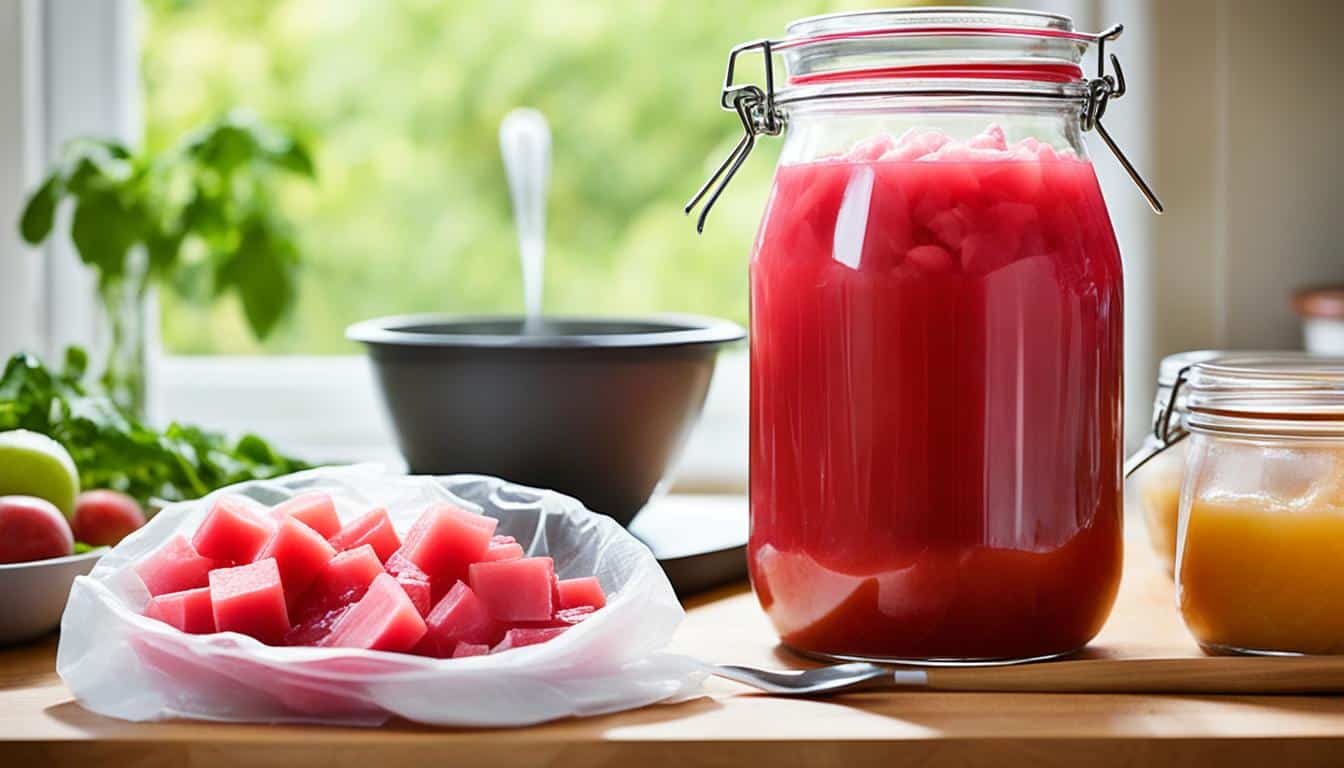
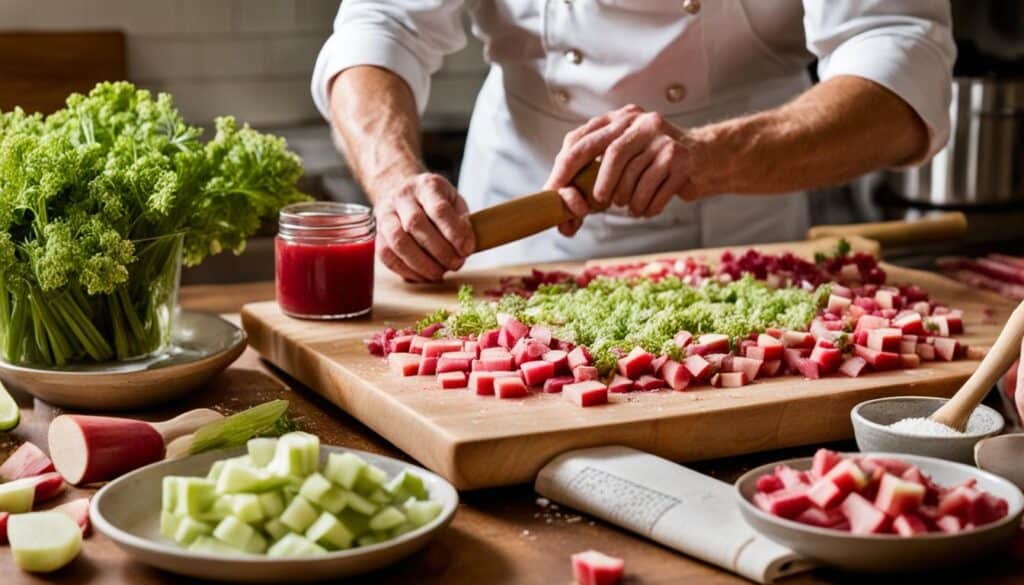
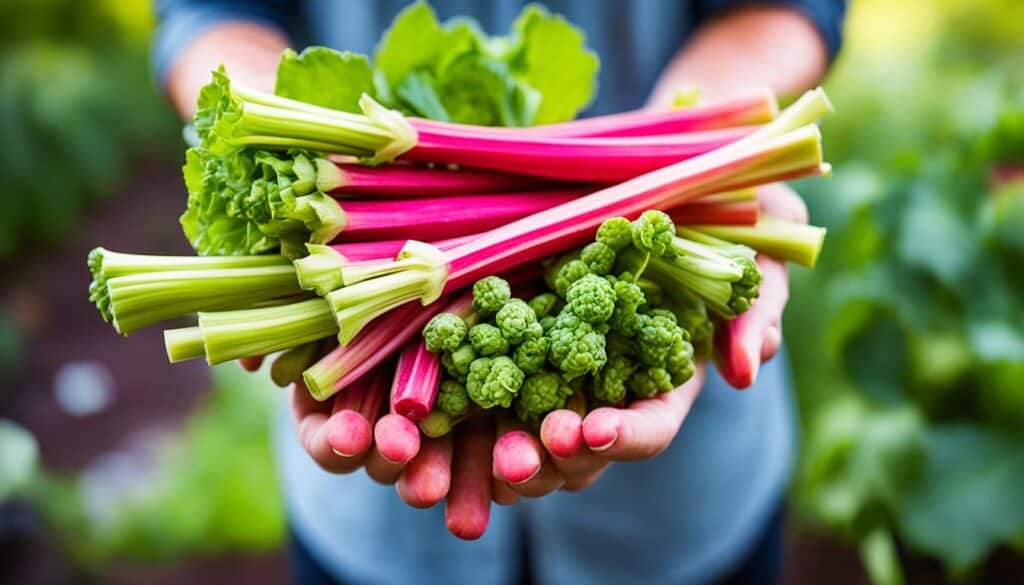
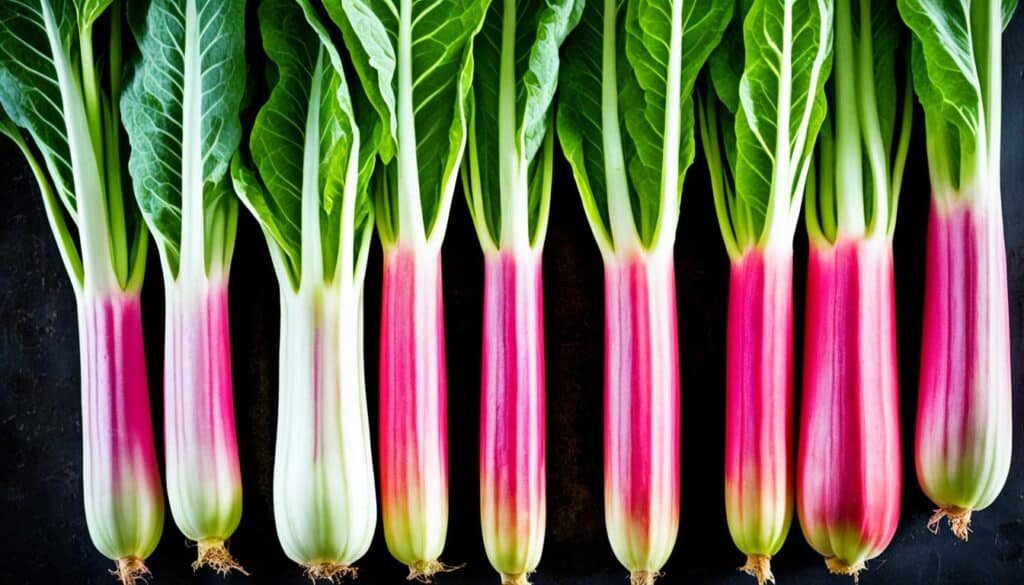
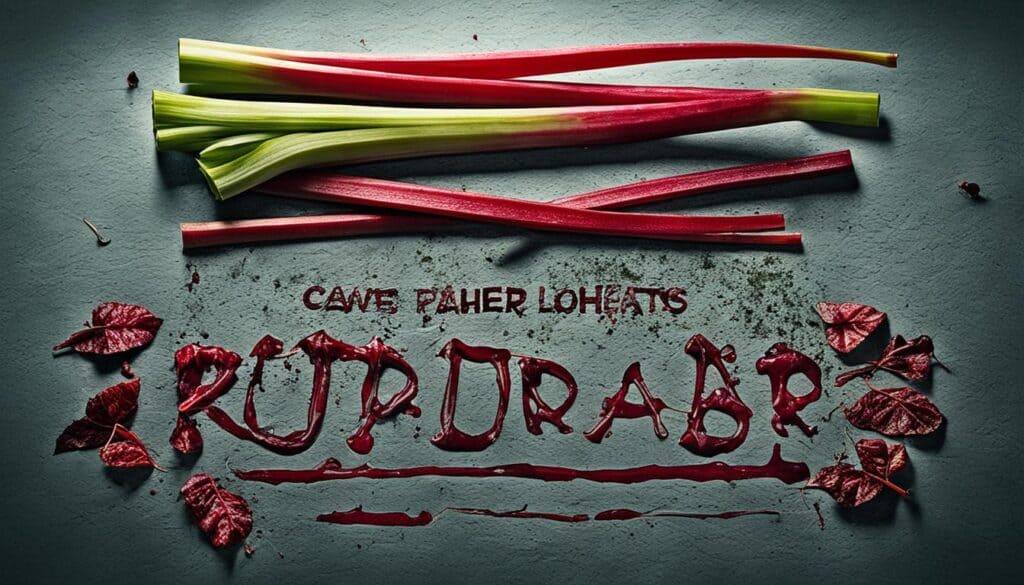
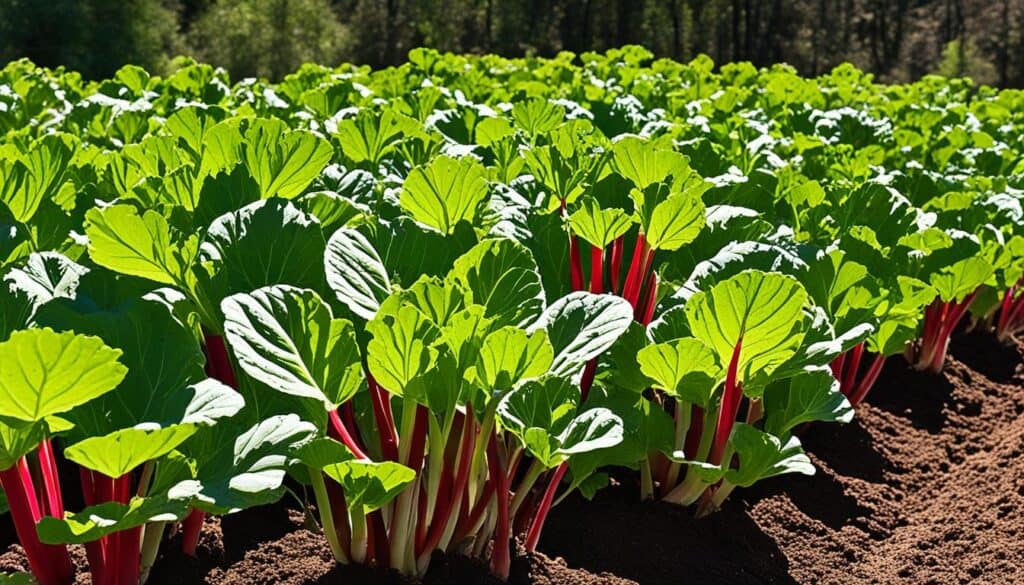



Leave a Reply